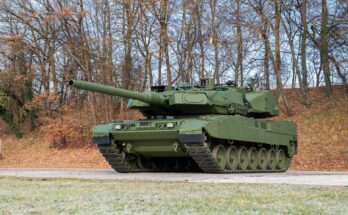By Stuart Slade, Forecast International
Over the next 10 years, at least 133 new submarines are projected to enter service worldwide, according to Forecast International’s 2015 edition of “The Market for Submarines.” This is the fifth year in succession that the projected number of new submarines has increased following the low point reached in the early 2000s. There are a number of reasons for this revival of construction, including a bow wave of delayed construction programs held over from the late 1990s onward and increasing international tensions expressed as disputes over territorial waters. However, the most significant factor is the intense effort made by the Chinese Navy to modernize and strengthen its submarine arm. More than a quarter of all the new submarines to be built over the next 10 years will enter service with the Chinese Navy.
The Chinese submarine fleet is now a very different force from its ancestor of a decade ago. The submarines based on old Russian designs from the 1950s have been withdrawn from service, and the last few examples of Chinese developments from that basic design are being decommissioned. They are being replaced on a one-for-one basis by new classes of diesel-electric attack submarines that draw heavily on modern Russian, German and Japanese influences. The Project 041 may not be quite as capable as the latest products of European and Japanese shipyards, but it has closed the gap greatly and is regarded as being a serious contender on the high seas. More importantly, almost 30 percent of the new diesel-electric submarines entering service during the next 10 years will be Chinese.
Another significant change has been the reappearance of a Chinese nuclear-powered submarine construction program. While construction of nuclear-powered attack submarines has been much slower than expected, with only 7.5 percent of new SSNs projected over the next decade coming from Chinese yards, China’s nuclear-powered ballistic missile submarine program has picked up serious momentum. More than half the SSBNs built over the next decade will be Chinese.
There is no doubt that the Chinese submarine fleet is much more formidable than its equivalent of 20 years ago. The question is, why have the Chinese invested so heavily in this arm of their Navy? Attempts to answer this question have led to a fever of speculation about the Chinese trying to establish a worldwide power projection capability or challenge the U.S. Navy for dominance of the Pacific Ocean. Other, less extreme suggestions include establishing an entry-denial capability that would stop the U.S. Navy from interfering with Chinese naval operations. Yet, what all these assessments neglect is the fundamental fact that countries build navies to serve their own national interests. The converse of this is that the national interests of China, as determined by the Chinese themselves, can be assessed by looking at its fleet and how it is deployed.
The answer to that question is particularly clear with the Chinese submarine fleet. While the Chinese have indeed invested heavily in their SSBNs, the priority in deployment is not to Qingdao on the eastern coast, where they might reasonably be expected to deploy against the United States. Instead, all the new SSBNs have been deployed to a new, southern SSBN base on Hainan, where they are better-placed to operate against Chinese regional enemies. The lack of emphasis on and slow construction of SSNs suggest that the Chinese Navy does not anticipate any serious threat to its SSBNs – certainly not a reasonable assumption if the perceived enemy is the United States, but a very reasonable one if said enemies are regional powers with limited ASW capability. Deploying SSKs against the U.S. Navy requires something much better than the existing Chinese designs, but those submarines are entirely adequate to operate in the face of the limited regional ASW capability.
Thus, evidence from Chinese naval construction and deployment strongly suggests that China’s naval buildup is purely in support of existing Chinese regional interests. Assuming that Chinese interests remain regional in nature and do not envision any kind of real confrontation with the United States, then we can expect to see continued construction of China’s SSKs and SSBNs while SSNs take a back seat. Thus, Chinese submarine construction will continue to drive production forecasts for this sector.
For 50 years, Forecast International intelligence reports have been the aerospace and defense industry standard for accurate research, analysis, and projections. Our experienced analysts compile, evaluate, and present accurate data for decision makers. FI's market research reports offer concise analysis of individual programs and identify market opportunities. Each report includes a program overview, detailed statistics, recent developments and a competitive analysis, culminating in production forecasts spanning 10 or 15 years. Let our market intelligence reports be a key part of reducing uncertainties and mastering your specific market and its growth potential. Find out more at www.forecastinternational.com



